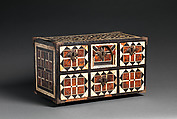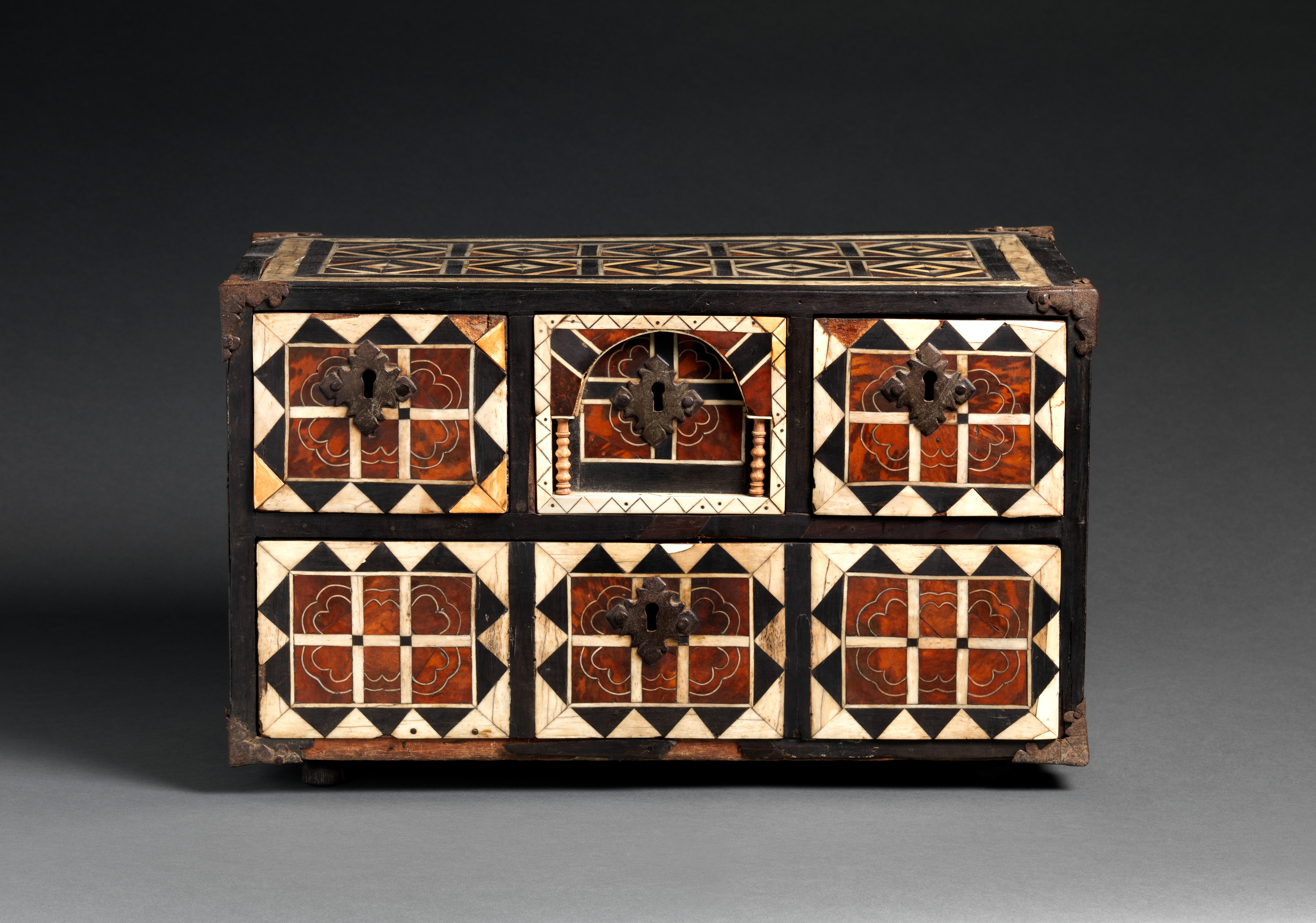Writing Box
Not on view
This escritorio (writing box) is an excellent example of work produced during the 17th century in Campeche, a thriving port city on Mexico’s Yucatan Peninsula. During the colonial period, Campeche was known for its commerce in tropical hardwoods and related luxury goods, including writing boxes and other portable furnishings, which were exported not only to Spain, but to other places in Spanish America. Exports to Venezuela, where this box was collected, are documented with great frequency during the 1620s and 1630s. Campeche escritorios imitate the form and decoration of similar boxes produced in Spain. The geometric patterning of inlaid ebony, tortoise shell, and bone speaks to the persistence of Hispano-Islamic decorative traditions in centers such as Seville, Cordoba and Granada and their transfer to Spanish American locales like Campeche during the colonial period.
Escritorios were typically found in the principal salas, or sitting rooms, of the residences of colonial elites. Often the most valuble piece of furniture in the room, they were used to store writing and sealing implements as well as paper and important documents. Intended for display as much as utility, escritorios were luxury furnishings that not only pointed to the wealth and status of their owners, but also signalled their education and erudition. Escritorios and smaller boxes, which were used to store valuables and personal possessions, were often arranged in stacked displays.
Due to rights restrictions, this image cannot be enlarged, viewed at full screen, or downloaded.
This artwork is meant to be viewed from right to left. Scroll left to view more.



